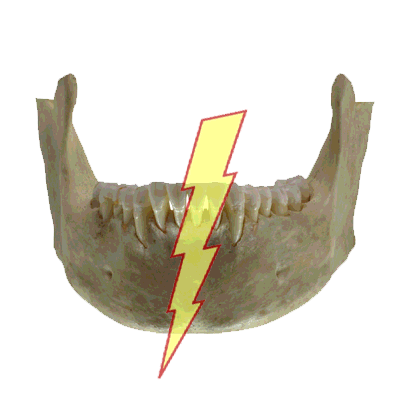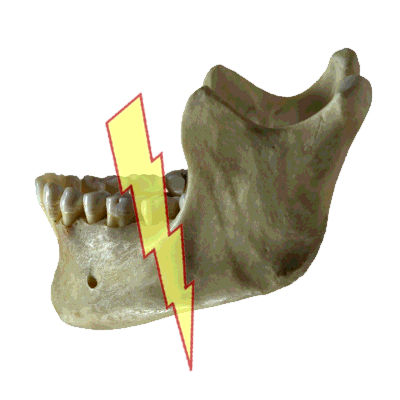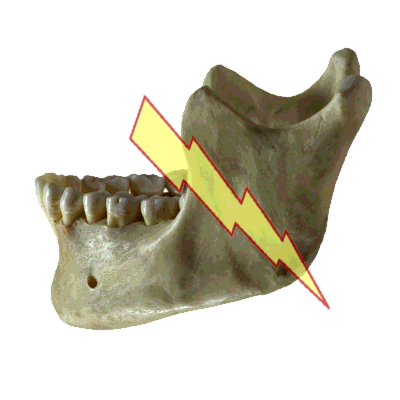
Mandibular Fractures
Mandibular fractures are classified according to their anatomic location in the mandible. The anatomic regions of the mandible are the symphysis, parasymphysis, body, angle, ramus, coronoid and condyle. The mandible follows the “ring bone rule” similar to other ring-shaped bony structures and in half of cases, fracture in more than one place. In decreasing order of frequency, mandibular fractures occur at the body, condyle, angle, symphysis/parasymphysis, ramus, and coronoid process. Fractures in children present differently because of bony pliability, resulting in greenstick fractures and interruption of the buttresses from unerupted teeth. Evaluation for mandibular fractures should include assessment of alveolar nerve injury, fractured or missing teeth, periodontal disease, and temporomandibular joint (TMJ) dislocation. Displacement of the mandibular fracture fragments occurs because of various muscle attachments resulting in unbalanced forces/counterforces. Radiographic assessment of fractures is often necessary, as clinical evaluation can be limited secondary to pain and muscle spasm. Additionally, CT data can be post-processed for panoramic (panorex) imaging.
The mandibular symphysis is the anterior midline of the mandible. A symphyseal fracture is defined as a sagittally oriented fracture extending inferiorly from the central incisors. A symphyseal fracture can be a primary fracture as a result of an anterior midline blow, or a secondary fracture in accordance with the “ring bone rule.”
The mandibular body is the region of the mandible spanning from the canine teeth to the anterior border of the masseter, which is usually near the most-posterior molars. Mandibular body fractures can be classified as favorable or unfavorable based on the absence or presence of distracting muscular forces. These fractures are associated with injury to the inferior alveolar nerve.
The mandibular angle is defined as the portion of the mandible covered by the masseter. Mandibular angle fractures can also be classified as favorable or unfavorable based on the absence or presence of distracting muscular forces. Wisdom teeth are a risk factor for fractures of the mandibular angle. These fractures are associated with injury to the inferior alveolar nerve.
The condylar process of the mandible is defined as the portion of the mandible superior to the sigmoid notch and includes the mandibular portion of the temporomandibular joint (TMJ). Condylar fractures are classified as extracapsular, subcondylar, or intracapsular. TMJ dislocation can occur from both directly blunt force and from pulling of the lateral pterygoid muscle on a fractured mandibular condyle. Condylar fractures that extend to the articular surface of the TMJ have can significant morbidity from resultant temporomandibular joint disorder.
 |
Mandibular Symphysis |
 |
Mandibular Body |
 |
Mandibular Angle |
 |
Mandibular Condyle |
Friends
 |
Mandibular Symphysis |
 |
Mandibular Body |
 |
Mandibular Angle |
 |
Mandibular Condyle |
Groups
 |
Orbital Fractures |
 |
Nasal Fractures |
 |
Tripod Fractures |
 |
LeFort Fractures |
 |
Smash Fractures |
 |
Mandibular Fractures |